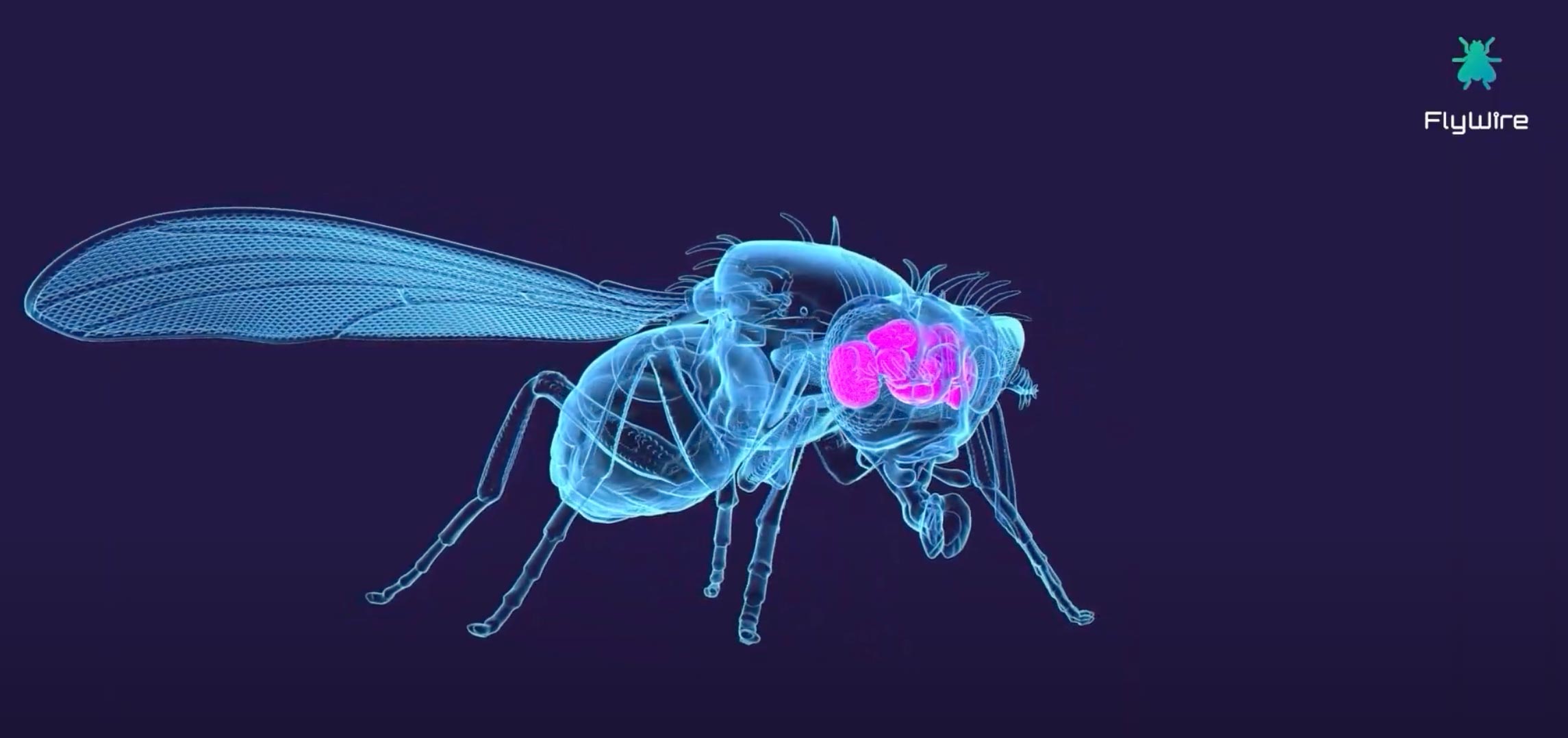
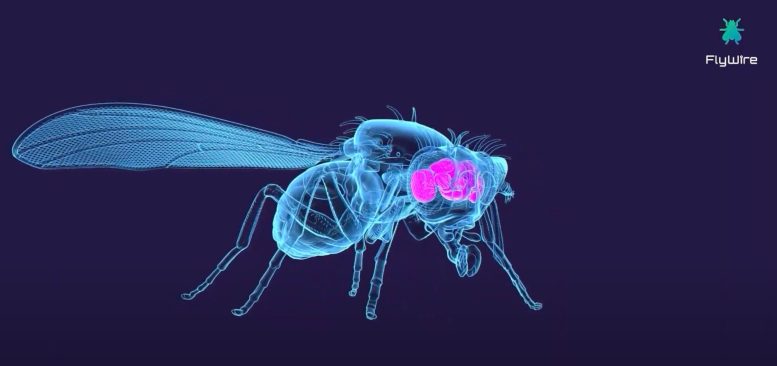
Researchers, supported by the NIH’s BRAIN Initiative, have created a comprehensive map of the fruit fly brain, identifying all neuron types and synaptic connections. This detailed connectome facilitates new studies on brain functions such as motor control and decision-making, paving the way for future simulations and insights into complex brain activities.
A research team backed by the National Institutes of Health (NIH) has revealed the first comprehensive map of the neural connections in the common fruit fly brain. This map provides a wiring diagram, known as a connectome, representing the largest and most complete neural blueprint of an adult animal to date. The work provides essential insights into the architecture of brains and the signaling pathways that support healthy brain functions. Detailed in a series of nine papers published in the journal Nature, the study documents over 50 million connections among more than 130,000 neurons.
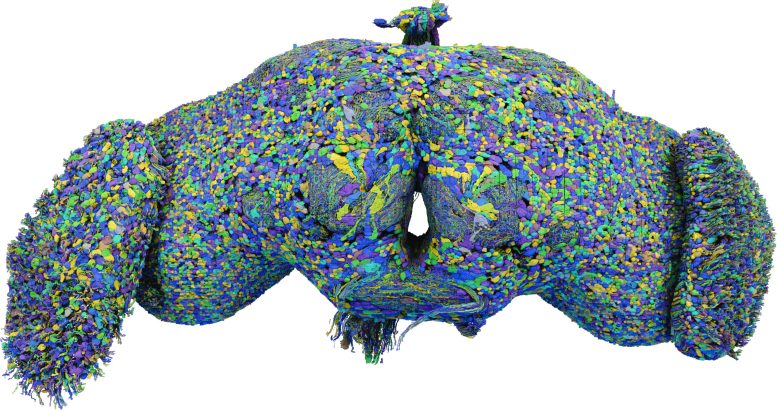
Unveiling Neural Sophistication
“The diminutive fruit fly is surprisingly sophisticated and has long served as a powerful model for understanding the biological underpinnings of behavior,” said John Ngai, Ph.D., director of NIH’s Brain Research Through Advancing Innovative Neurotechnologies Initiative®, or The BRAIN Initiative®. “This milestone not only provides researchers a new set of tools for understanding how the circuits in the brain drive behavior, but importantly serves as a forerunner to ongoing BRAIN-funded efforts to map the connections of larger mammalian and human brains.”
The connectome map details the full set of cell classes in the fruit fly brain, identifying different types of neurons and chemical connections, or synapses, between neurons. It also provides insight into the type of neurotransmitter (chemicals such as dopamine or serotonin) secreted by each neuron.
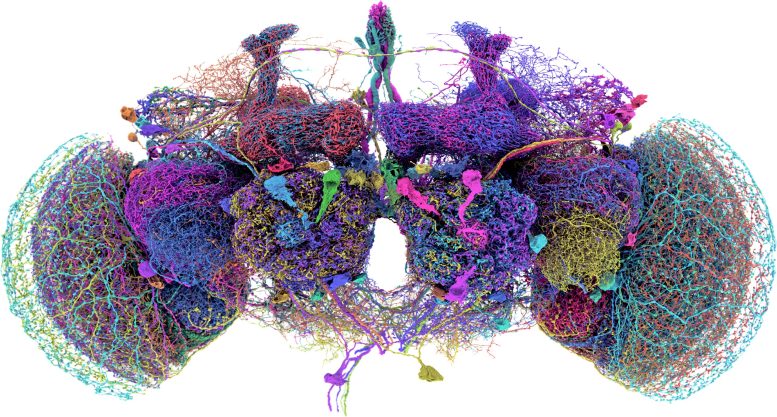
Mapping Behavioral Circuits
The researchers also created a map of projections between brain regions, known as a projectome, that tracks the organization of the hemispheres and behavioral circuits within the fly brain. It allows for the detailed mapping of specific brain circuits that control behavior, such as the ocellar brain circuit, which takes in visual stimuli and outputs behavioral changes that orient the fly’s body during flight.
In a companion paper, the researchers provided an annotation of the fly connectome, detailing cell types, cell classes, and more. It includes information critical for researchers and others who will use the connectome to advance our understanding of brain physiology and behavior.
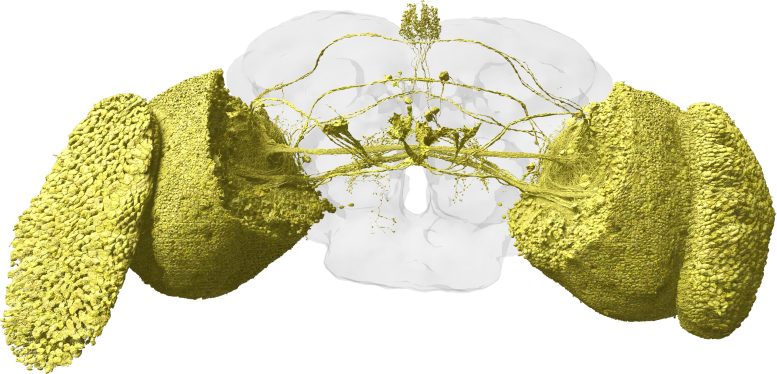
Advancing Brain Research Through Community Collaboration
The fruit fly is capable of surprisingly advanced cognition and behavior, making it an ideal candidate for this initial connectome project. For example, they can form long-term memories, engage in social interactions, and navigate over large distances. Now that the fruit fly connectome has been established, the same methodology could be used to rapidly create similar maps in larger-brained animals. For example, the new map may serve as a reference to understand how a host of human mutations affect brain connections.
To create the fly connectome, researchers took electron microscope images of the complete fly brain that had been publicly released and used a computer program to automatically identify or “segment” the neurons in the images. The program is not foolproof, so the researchers created a computational system of tools that allowed a large online research community to look at the segments, proofread them for accuracy, and annotate cell types and classes in a community-driven manner. Proofreading of the identification and delineation of the individual neurons was completed by a consortium of fruit fly labs, called FlyWire, which included scientists from around the world.
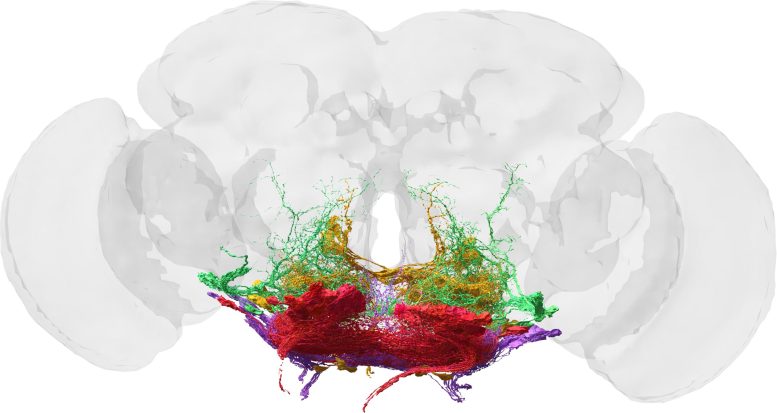
“In 2021, only 15% of the neurons had been proofread,” said Shelli Avenevoli, Ph.D., acting director of NIH’s National Institute of Mental Health. “Opening proofreading to the larger scientific community studying the fruit fly brain greatly accelerated how fast we were able to complete this connectome.”
Data analysis tools for the full fruit fly connectome can be found at https://codex.flywire.ai/. Researchers can interact with the connectome data at https://fafb-flywire.catmaid.org/. The study was supported by NIH’s The BRAIN Initiative, a multidisciplinary collaboration across 10 NIH institutes and centers that is enabling researchers to understand the brain at unprecedented levels of detail in both health and disease, improving how we treat, prevent, and cure brain disorders.
For more on this breakthrough:
References:
“Neuronal wiring diagram of an adult brain” by Sven Dorkenwald, Arie Matsliah, Amy R. Sterling, Philipp Schlegel, Szi-chieh Yu, Claire E. McKellar, Albert Lin, Marta Costa, Katharina Eichler, Yijie Yin, Will Silversmith, Casey Schneider-Mizell, Chris S. Jordan, Derrick Brittain, Akhilesh Halageri, Kai Kuehner, Oluwaseun Ogedengbe, Ryan Morey, Jay Gager, Krzysztof Kruk, Eric Perlman, Runzhe Yang, David Deutsch, Doug Bland, Marissa Sorek, Ran Lu, Thomas Macrina, Kisuk Lee, J. Alexander Bae, Shang Mu, Barak Nehoran, Eric Mitchell, Sergiy Popovych, Jingpeng Wu, Zhen Jia, Manuel A. Castro, Nico Kemnitz, Dodam Ih, Alexander Shakeel Bates, Nils Eckstein, Jan Funke, Forrest Collman, Davi D. Bock, Gregory S. X. E. Jefferis, H. Sebastian Seung, Mala Murthy and The FlyWire Consortium, 2 October 2024, Nature.
DOI: 10.1038/s41586-024-07558-y
“Whole-brain annotation and multi-connectome cell typing of Drosophila” by Philipp Schlegel, Yijie Yin, Alexander S. Bates, Sven Dorkenwald, Katharina Eichler, Paul Brooks, Daniel S. Han, Marina Gkantia, Marcia dos Santos, Eva J. Munnelly, Griffin Badalamente, Laia Serratosa Capdevila, Varun A. Sane, Alexandra M. C. Fragniere, Ladann Kiassat, Markus W. Pleijzier, Tomke Stürner, Imaan F. M. Tamimi, Christopher R. Dunne, Irene Salgarella, Alexandre Javier, Siqi Fang, Eric Perlman, Tom Kazimiers, Sridhar R. Jagannathan, Arie Matsliah, Amy R. Sterling, Szi-chieh Yu, Claire E. McKellar, FlyWire Consortium, Marta Costa, H. Sebastian Seung, Mala Murthy, Volker Hartenstein, Davi D. Bock and Gregory S. X. E. Jefferis, 2 October 2024, Nature.
DOI: 10.1038/s41586-024-07686-5
The Brain Research Through Advancing Innovative Neurotechologies® Initiative and The BRAIN Initiative® are registered trademarks of the U.S. Department of Health and Human Services.